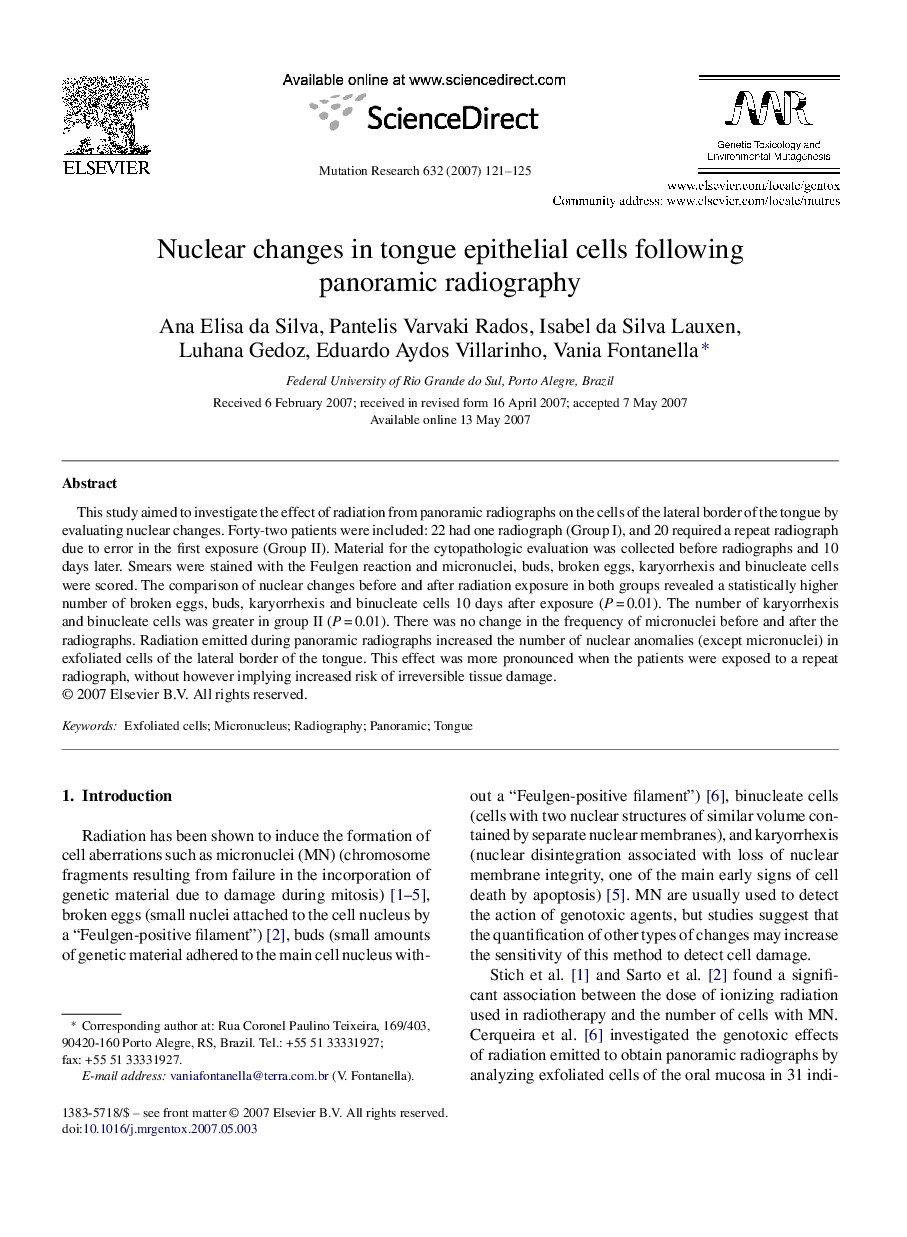| Article ID | Journal | Published Year | Pages | File Type |
|---|---|---|---|---|
| 2149159 | Mutation Research/Genetic Toxicology and Environmental Mutagenesis | 2007 | 5 Pages |
This study aimed to investigate the effect of radiation from panoramic radiographs on the cells of the lateral border of the tongue by evaluating nuclear changes. Forty-two patients were included: 22 had one radiograph (Group I), and 20 required a repeat radiograph due to error in the first exposure (Group II). Material for the cytopathologic evaluation was collected before radiographs and 10 days later. Smears were stained with the Feulgen reaction and micronuclei, buds, broken eggs, karyorrhexis and binucleate cells were scored. The comparison of nuclear changes before and after radiation exposure in both groups revealed a statistically higher number of broken eggs, buds, karyorrhexis and binucleate cells 10 days after exposure (P = 0.01). The number of karyorrhexis and binucleate cells was greater in group II (P = 0.01). There was no change in the frequency of micronuclei before and after the radiographs. Radiation emitted during panoramic radiographs increased the number of nuclear anomalies (except micronuclei) in exfoliated cells of the lateral border of the tongue. This effect was more pronounced when the patients were exposed to a repeat radiograph, without however implying increased risk of irreversible tissue damage.
